I really need to study up on pests. Its something I have put off while fiddling with just a few plants per year. Now I am thinking bigger, and have seen too many stories about a grow being wiped out, or hit hard with something they were caught off guard by.
-
If you need help identifying a pepper, disease, or plant issue, please post in Identification.
You are using an out of date browser. It may not display this or other websites correctly.
You should upgrade or use an alternative browser.
You should upgrade or use an alternative browser.
tutorial The Pest Guide
- Thread starter Cayennemist
- Start date
Aphid IMG
Threat level: 5
Location: every where except Antarctica
Control: Water with dish soap, 1 Tbsp of soap per gallon (avoid run off in to soil if possible)
Biological Control: Ladybugs and other beneficial insects.
Prevention:
Damage caused: Chewed up leaves, damaged new growth.
Just tried the dish soap method for aphid control, wishing for the best!!!
Threat level: 5
Location: every where except Antarctica
Control: Water with dish soap, 1 Tbsp of soap per gallon (avoid run off in to soil if possible)
Biological Control: Ladybugs and other beneficial insects.
Prevention:
Damage caused: Chewed up leaves, damaged new growth.
Just tried the dish soap method for aphid control, wishing for the best!!!
Pepper-Guru
Extreme Member
Tomato HornWorms eat peppers. Could be many little animals.Jacobt said:What would eat green peppers? I have two Hungarian hot wax plants. The peppers get about 2-3 inches long then disappear. No leaf damage. Pants are in the backyard so no one else has access to them. The pepper stem is still there. Just no peppers. Any ideas?
Jacobt said:What would eat green peppers? I have two Hungarian hot wax plants. The peppers get about 2-3 inches long then disappear. No leaf damage. Pants are in the backyard so no one else has access to them. The pepper stem is still there. Just no peppers. Any ideas?
Also, other types of caterpillars eat peppers. I have found some tiny brown and green ones literally inside the peppers chompin away a few times.
And, don't forget about slugs and snails. I'm pretty sure they just eat the leaves, but they love pepper plants. I had leaves missing each morning and only figured it out when I saw the trail leading to/from the trunk.
.
Not sure if this works or not, but find it curious that I have now heard it from 2 old farmers to prevent cutworms. They said take some small, maybe 8 penny nails, non galvanized or coated, and just put 3-4 of them around the base of the plant in the ground. They said cutworms will not bother your plants anymore and just till them into the soil at the end of the year and they rust out giving iron to the plants.
Like stated, not sure if this is superstition or something that works.
Like stated, not sure if this is superstition or something that works.
From Home Depot
http://www.homedepot.com/p/Corry-s-15-ft-Slug-and-Snail-Copper-Tape-100099017/100662157?cm_mmc=Shopping%7cTHD%7cG%7c0%7cG-BASE-PLA-D28O-OutdoorGarden%7c&gclid=CMvb4YyIl80CFUVsfgodHo4BOQ&gclsrc=aw.ds
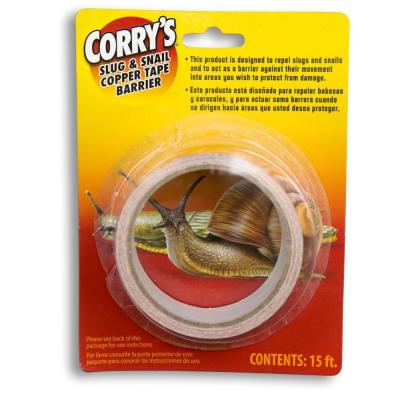
This should work in much the same way
http://www.homedepot.com/p/Corry-s-15-ft-Slug-and-Snail-Copper-Tape-100099017/100662157?cm_mmc=Shopping%7cTHD%7cG%7c0%7cG-BASE-PLA-D28O-OutdoorGarden%7c&gclid=CMvb4YyIl80CFUVsfgodHo4BOQ&gclsrc=aw.ds

This should work in much the same way
- Pics from Google Search
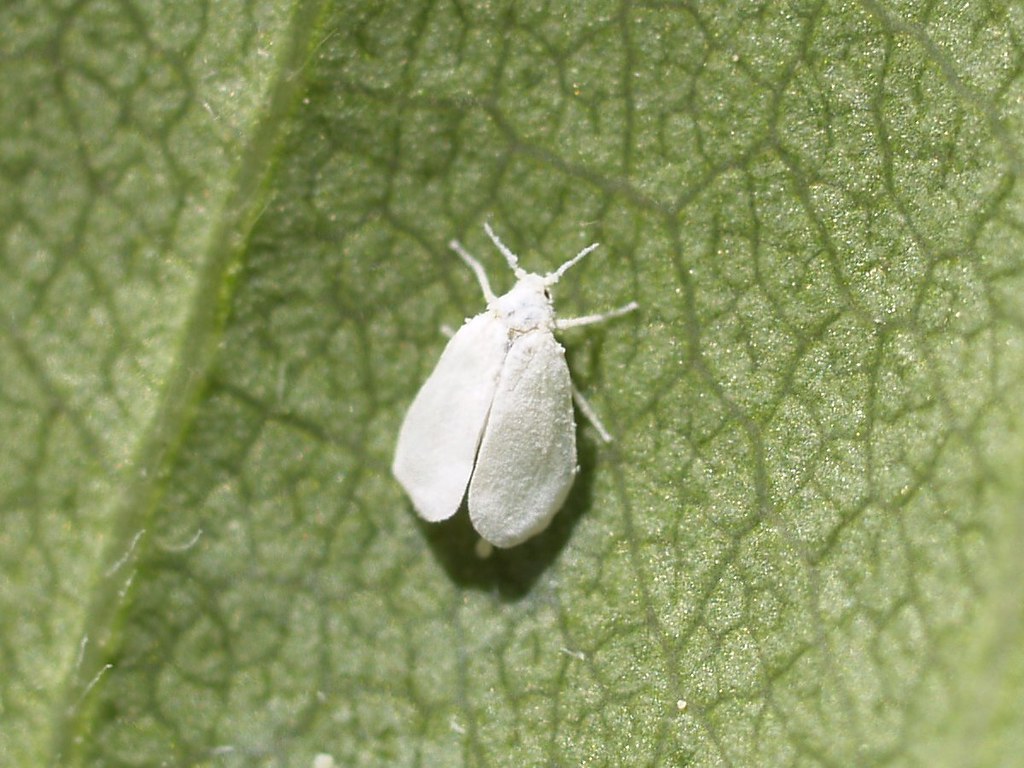
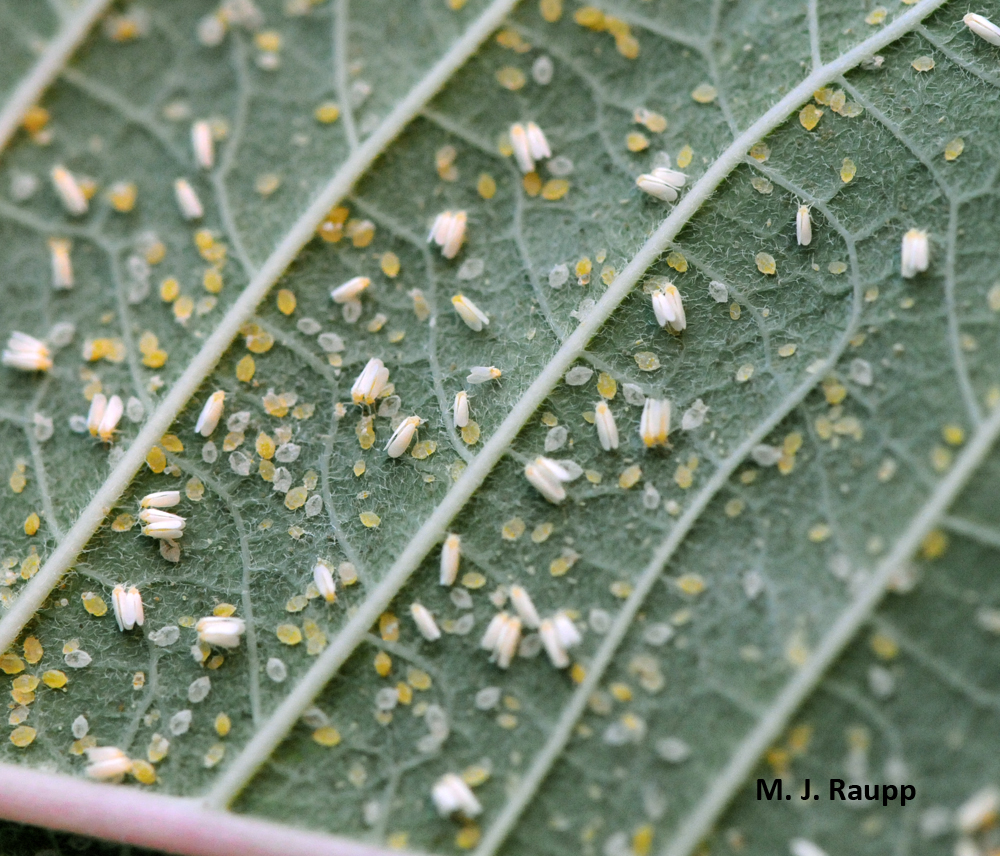
- Look at all those mating pairs (above)
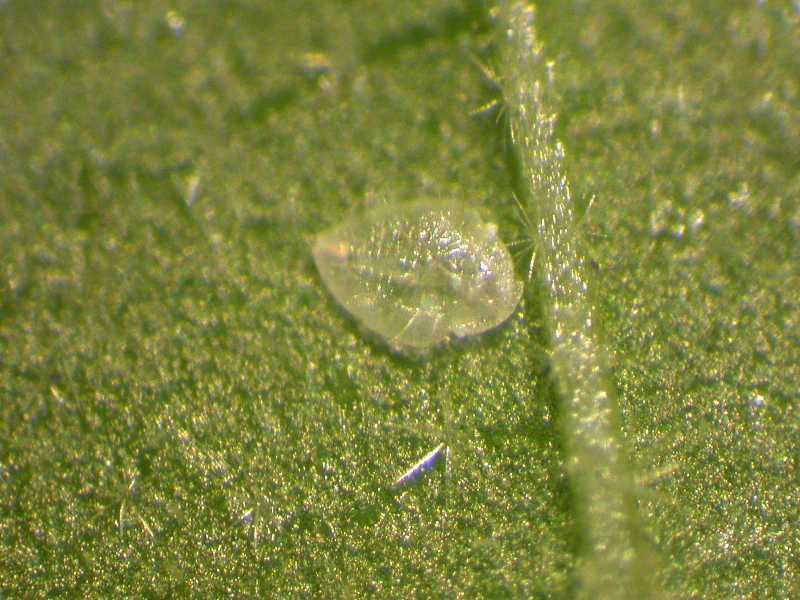
- Whiteflies
Location: Leaves
Control: Azamax; neem; foggers; hot shot pest strip
Biological Control: ladybugs; lacewing larva (eat larval whiteflies before they can fly)
Prevention:
Damage caused: The larva and nymphs suck sap from the leaves; can cause discoloration and loss of leaves; can spread viruses and bacteria
I just wanted to add this because I had been battling a whitefly problem for weeks now. I have a large Olive Tree which is infested and while I work on fixing that, many of the whiteflies have found their way into my grow room (garage).
After trying a few things, including Doktor Doom fogger (which helped but didn't eradicate), I tried just sticking one of those Hot Shot strips inside the vent (literally shoving it down the pipe) that feeds into my grow tent. Within 2-3 days, they were all gone!
recommended for indoor/tent (not for you strict organic people, try giving the plant a hug instead. Singing may increase the effectiveness of hugs)
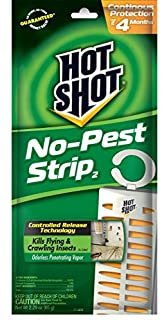
UPDATE: I have since found a few white flies in the tent, this did not eradicate them, but it did make a serious dent in the population.
.
My plants have had fungus gnats for some time, I keep the soil as dry as possible but they seem to return after every watering. They haven't done any noticeable damage but they're bugging me. My local garden store sells a product against soil fungus and one against soil insects. Is my assumption that by getting the anti fungal one the gnats will leave when there is no more food left correct or would I be safer getting the insect killer?
Neel said:My plants have had fungus gnats for some time, I keep the soil as dry as possible but they seem to return after every watering. They haven't done any noticeable damage but they're bugging me. My local garden store sells a product against soil fungus and one against soil insects. Is my assumption that by getting the anti fungal one the gnats will leave when there is no more food left correct or would I be safer getting the insect killer?
Fungus gnats eat plant roots. Killing soil fungus won't help anything. I found an water dispersable Bt product on Amazon that works really well against fungus gnats. Pretty cheap, too.
Fungus gnat larvae only eat the soft young roots of immature plants. They won't harm a plant of any size.Hybrid Mode 01 said:Fungus gnats eat plant roots. Killing soil fungus won't help anything. I found an water dispersable Bt product on Amazon that works really well against fungus gnats. Pretty cheap, too.
If you really want to keep fungus gnats at bay, top dress your containers with a product called "growstones". Works like a champ. Otherwise, the gnats are harmless, and will actually benefit if you have an organic grow.
I was just reading about root rot disease the other day, and fungus gnats were mentioned as one of the vectors for various strains of the disease.
"Pythium oospores were found in the digestive tracts of larvae and adults of each of these insects. In
fungus gnats, oospores acquired during the larval stage remain in the
digestive tract during pupation, and can be aerially transmitted
generally in a viable state by the adults and eventually excreted in the
frass (40). In Canada, fungus gnats are found wherever greenhouse
crops are grown, and readily enter greenhouses through doors and
ventilators (37). Their larvae feed on fungal mycelia and organic
residues in soils, soilless mixes, hydroponic media, and nutrient
solutions. The larvae are also known to feed on roots and root hairs
of cucumbers and other plants, thereby making wounds through which
pathogens may invade. It is likely that similar or different insects are
factors in epidemics of root rot in hydroponic crops produced in
warm temperate and tropical climates, but we have not encountered
any reports on this possibility."
The full pdf is here, http://www.scielo.br/pdf/sp/v32n4/a01v32n4.pdf
The article is actually about the pathogens that cause root rot, and goes on to list methods of controlling the disease. In any event, being the vector for a major disease seems like justification for fungus gnats to have a slightly higher rating on the charts, imo.
"Pythium oospores were found in the digestive tracts of larvae and adults of each of these insects. In
fungus gnats, oospores acquired during the larval stage remain in the
digestive tract during pupation, and can be aerially transmitted
generally in a viable state by the adults and eventually excreted in the
frass (40). In Canada, fungus gnats are found wherever greenhouse
crops are grown, and readily enter greenhouses through doors and
ventilators (37). Their larvae feed on fungal mycelia and organic
residues in soils, soilless mixes, hydroponic media, and nutrient
solutions. The larvae are also known to feed on roots and root hairs
of cucumbers and other plants, thereby making wounds through which
pathogens may invade. It is likely that similar or different insects are
factors in epidemics of root rot in hydroponic crops produced in
warm temperate and tropical climates, but we have not encountered
any reports on this possibility."
The full pdf is here, http://www.scielo.br/pdf/sp/v32n4/a01v32n4.pdf
The article is actually about the pathogens that cause root rot, and goes on to list methods of controlling the disease. In any event, being the vector for a major disease seems like justification for fungus gnats to have a slightly higher rating on the charts, imo.
Is root rot really that common? I honestly can't say that I've ever had any root rot issues, except in the very beginning, when I had a problem with overwatering.
Fungus gnats don't really need to be rated higher, because any organic grower knows that if you want to negate fungus gnat problems, just don't give them the plant as the only feeding option. Keep some small amounts of compost or other undigested material - like kelp meal, for example - and you actually put the fungus gnat larva to work, as opposed to being tormented by them. In that case, they become just a sight nuisance, rather than an actual problem.
What DOES deserve to be listed as a higher threat, is the whitefly. Whiteflies not only introduce disease directly through foliage, but they are also vehicles for the dreaded broad mite. (who hitch rides on whitefly) There are few pests as difficult to get rid of, as whitefly.
Fungus gnats don't really need to be rated higher, because any organic grower knows that if you want to negate fungus gnat problems, just don't give them the plant as the only feeding option. Keep some small amounts of compost or other undigested material - like kelp meal, for example - and you actually put the fungus gnat larva to work, as opposed to being tormented by them. In that case, they become just a sight nuisance, rather than an actual problem.
What DOES deserve to be listed as a higher threat, is the whitefly. Whiteflies not only introduce disease directly through foliage, but they are also vehicles for the dreaded broad mite. (who hitch rides on whitefly) There are few pests as difficult to get rid of, as whitefly.
solid7 said:Is root rot really that common? I honestly can't say that I've ever had any root rot issues, except in the very beginning, when I had a problem with overwatering.
Fungus gnats don't really need to be rated higher, because any organic grower knows that if you want to negate fungus gnat problems, just don't give them the plant as the only feeding option. Keep some small amounts of compost or other undigested material - like kelp meal, for example - and you actually put the fungus gnat larva to work, as opposed to being tormented by them. In that case, they become just a sight nuisance, rather than an actual problem.
What DOES deserve to be listed as a higher threat, is the whitefly. Whiteflies not only introduce disease directly through foliage, but they are also vehicles for the dreaded broad mite. (who hitch rides on whitefly) There are few pests as difficult to get rid of, as whitefly.
I am a new grower, so just basing my thoughts off a limited amount of experience and reading of articles. Here are the factors that lead me to worry about root rot:
I live in the tropics, where it is very hot.
I plan to plant hydroponically.
It will cost a lot to cool the nutrient solution, to reduce the effects of root rot bacteria.
It will cost a lot to increase the oxygen content of my water (when it has a high temp), to reduce the effects of root rot bacteria.
The cost of cleaning root rot bacteria out of a hydroponic system... well, it costs a lot.
I planted some dutch bucket tomatoes on my flat roof a few months back. Every single one of them got severe root rot. They lived,but they looked sorry while doing it. There was a definite reduction in yield, again, exacerbated by the hot conditions in which the plants were grown.
Remember, I am starting with a clean system, I don't have to have root rot bacteria present from day one. But, one little fungus gnat can come along and give all my plants (which are on a recirculating system) root rot just by infecting a single plant. Yeah, that worries me. I'm not growing organically, so i can nuke some of the other common pests relatively cheaply, but if the plants are infected with sever root rot, I don't see what I could do about it.
To be fair, you are trying to do something that is really beyond the scope of its intended parameters. Because you are tying to do something that is counterproductive, that does not increase the threat level to all growers, collectively. (it is just a concern for you, in particular) Outdoor hydroponics negates some of the most critical control elements - i.e., the environmental ones - and leaves you susceptible to things that even sub-optimal growing conditions in the proper media, will seldom expose you to.
So, the threat level is still more than appropriate. Outdoor growers live with fungus gnats 100% of the time, and usually, don't even know they are there. (which they would, if their role in the transmission of pathogenic root rot were significant) By far, the biggest threat from fungus gnats, is with seedlings and damping off. And even that can be mitigated, without actually destroying the gnat larva.
They are really more of a nuisance when they find their way indoors. But other than that, one of the most overrated pests, by far.
For what it's worth, I live in the sub-tropics, and 9 months out of the year, my weather is just like yours. You are not going to find much joy in growing tomatoes outdoors hydroponically. Suggest you try a different method. (search for my modified Hempy buckets)
So, the threat level is still more than appropriate. Outdoor growers live with fungus gnats 100% of the time, and usually, don't even know they are there. (which they would, if their role in the transmission of pathogenic root rot were significant) By far, the biggest threat from fungus gnats, is with seedlings and damping off. And even that can be mitigated, without actually destroying the gnat larva.
They are really more of a nuisance when they find their way indoors. But other than that, one of the most overrated pests, by far.
For what it's worth, I live in the sub-tropics, and 9 months out of the year, my weather is just like yours. You are not going to find much joy in growing tomatoes outdoors hydroponically. Suggest you try a different method. (search for my modified Hempy buckets)
A fair response. I do actually have the plants under uv plastic, but you are right, the conditions are simply appalling. I hope other growers have better, and so less need to be concerned with fungus gnats as a vector of root rot. Enough hijacking of a pinned thread by a random newcomer who forgot to express his thanks for this fine resource.solid7 said:To be fair, you are trying to do something that is really beyond the scope of its intended parameters. Because you are tying to do something that is counterproductive, that does not increase the threat level to all growers, collectively. (it is just a concern for you, in particular) Outdoor hydroponics negates some of the most critical control elements - i.e., the environmental ones - and leaves you susceptible to things that even sub-optimal growing conditions in the proper media, will seldom expose you to.
So, the threat level is still more than appropriate. Outdoor growers live with fungus gnats 100% of the time, and usually, don't even know they are there. (which they would, if their role in the transmission of pathogenic root rot were significant) By far, the biggest threat from fungus gnats, is with seedlings and damping off. And even that can be mitigated, without actually destroying the gnat larva.
They are really more of a nuisance when they find their way indoors. But other than that, one of the most overrated pests, by far.
For what it's worth, I live in the sub-tropics, and 9 months out of the year, my weather is just like yours. You are not going to find much joy in growing tomatoes outdoors hydroponically. Suggest you try a different method. (search for my modified Hempy buckets)
solid7 said:Fungus gnat larvae only eat the soft young roots of immature plants. They won't harm a plant of any size.
If you really want to keep fungus gnats at bay, top dress your containers with a product called "growstones". Works like a champ. Otherwise, the gnats are harmless, and will actually benefit if you have an organic grow.
In response to your first point -


 You pedant.
You pedant.And regarding your second point, top dressing only works against fungus gnats if you have no drainage holes in your pots.
Hybrid_Mode_01 said:
In response to your first point -

You pedant.
And regarding your second point, top dressing only works against fungus gnats if you have no drainage holes in your pots.
LOL. I wasn't making a point to set anyone straight.. Next time, I'll see if I can condense that into text speak. (fngs nats ez no prob...)
.
Technically, I suppose you are right... but if they've got a whole pile of peat moss or coco to chew on at the bottom - which is what they are mostly feeding on, anyway - your delicate feeder roots have half a chance. (or so that's what experience has taught me)
.
If you are fighting fungus gnats as an eyesore, rather than considering them an actual threat, then you are 100% correct.
.
So let's talk about this one for a moment... Those "biological agents" that "may or may not exist for the home gardener"... It's pointless to list such things, if there isn't a way to acquire and/or culture such things.Cayennemist said:
- Root Knot Nematode
Threat level:7
Location: Everywhere
Control: Insecticidal soap, essential oils, Hot Pepper oil/wax, garlic oil, SM90, Azamax
Biological Control: "Solarization" is moderately effective: raised rows of soil are covered with plastic in the summertime. The high soil temperatures kill the nematodes. Several effective biological agents exist including Bacillus megaterium, Trichoderma album, Trichoderma harzianum, and Ascophyllum nodosum. These agents may not be available to the home gardner.
Prevention:Root Knot Nematodes can live on a wide variety of plants including grasses and weed species so prevention can be difficult once the pests are present.
Damage caused: The nematodes attack the roots of the plant and form galls (knots) on the roots that vary in size depending on the plant species. The root damage impairs the plant's ability to take up water and nutrients. Plants will droop even when there is sufficient soil moisture. Eventually plants will begin to show symptoms of Nitrogen deficiency (yellowing of lower leaves, stunted growth) even though there are sufficient nutrients in the soil.
.
We all know that many of these multi-syllabic words exist naturally, and one sure way to get them, is through the use of compost. However, in existing pots, or with mixes that have been created for high porosity and drainage, it isn't always practical to incorporate compost.
.
I have my first confirmed loss, due to root knot nematode. I want to figure out how to encourage these "biological agents", without destroying the rest of my food web. If anyone knows how to make a bacterial/fungal inoculant, then it's your turn to speak.
